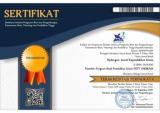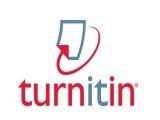Students’ Misconceptions in Chemistry Learning: A Systematic Literature Review from 2015 to 2025
Abstract
This study aims to identify the forms of misconceptions in chemistry learning, the methods/instruments used to detect these misconceptions, and effective instructional strategies to address them through a Systematic Literature Review (SLR) approach. The review was conducted on 24 scientific articles published between 2015 and 2025, obtained from the Scopus and Google Scholar databases (via Publish or Perish). Article selection was carried out in stages following the PRISMA flow, and the results were analyzed using a thematic content analysis approach. The review findings indicate that the topics most frequently associated with misconceptions are chemical bonding, acid-base concepts, chemical equilibrium, and reaction rates. The most commonly used instruments to identify misconceptions are three-tier diagnostic tests, followed by interviews and two-tier tests. Effective instructional strategies include the use of multiple representations, digital simulations, the 5E model, inquiry-based learning, and educational games. The study also revealed several research gaps, such as the lack of longitudinal studies, limited topic coverage in chemistry, and the underutilization of interactive digital technologies. Therefore, the development of innovative learning approaches and technology-based conceptual assessments is necessary to sustainably reduce misconceptions in chemistry learning.
Keywords
Full Text:
PDFReferences
Adu-Gyamfi, K. and Ampiah, J. (2019). Students’ alternative conceptions associated with application of redox reactions in everyday life. Asian Education Studies, 4(1), 29. https://doi.org/10.20849/aes.v4i1.590
Afifah, I., Irwandi, D., & Murniati, D. (2021). Identifikasi miskonsepsi terhadap konsep larutan penyangga dengan menggunakan instrumen tes diagnostic four-tier multiple choice. JRPK - Jurnal Riset Pendidikan Kimia, 11(1), 27-34. https://doi.org/10.21009/jrpk.111.05
Agatha, B., Amiza, R., & Sulistyaningsih, Y. (2022). Analisis miskonsepsi calon guru kimia dengan menggunakan two-tier multiple choice diagnostic test pada materi kesetimbangan kimia. Dalton Jurnal Pendidikan Kimia Dan Ilmu Kimia, 5(2), 9. https://doi.org/10.31602/dl.v5i2.6323
Ang, W., Ng, Y., & Liew, R. (2020). Physical and digital educational escape room for teaching chemical bonding. Journal of Chemical Education, 97(9), 2849-2856. https://doi.org/10.1021/acs.jchemed.0c00612
Antonucci-Durgan, D., & Abramovich, S. (2024). Investigating the Relationship between Students’ Spatial Ability and Their Assumptions about the Structure and Motion of Matter. Journal of Chemical Education, 101(9), 3656-3665. https://doi.org/10.1021/acs.jchemed.4c00174
Belova, N., & Zowada, C. (2020). Innovating higher education via game-based learning on misconceptions. Education Sciences, 10(9), 221. http://dx.doi.org/10.3390/educsci10090221
Boateng, S. (2024). Assessing conceptual difficulties experienced by pre-service chemistry teachers in organic chemistry. Eurasia Journal of Mathematics Science and Technology Education, 20(2), em2398. https://doi.org/10.29333/ejmste/14156
Butler, J., Mooney Simmie, G., & O’Grady, A. (2015). An investigation into the prevalence of ecological misconceptions in upper secondary students and implications for pre-service teacher education. European Journal of Teacher Education, 38(3), 300-319. http://dx.doi.org/10.1080/02619768.2014.943394
Cai, S. (2022). Harry potter themed digital escape room for addressing misconceptions in stoichiometry. Journal of Chemical Education, 99(7), 2747-2753. https://doi.org/10.1021/acs.jchemed.2c00178
Dewi, R. and Wardani, S. (2018). Analysis of student difficulties and learning outcomes with guided inquiry learning model. https://doi.org/10.2991/iset-18.2018.77
Eymur, G., & Geban, Ö. (2017). The collaboration of cooperative learning and conceptual change: Enhancing the students’ understanding of chemical bonding concepts. International journal of science and mathematics education, 15, 853-871. http://dx.doi.org/10.1007/s10763-016-9716-z
Golestaneh, M. and Mousavi, S. (2024). Exploring iranian pre-service teachers' conceptual understanding of chemical equilibrium. Journal of Turkish Science Education, 21(1), 44-60. https://doi.org/10.36681/tused.2024.003
Gultom, M., Fitriyani, D., Paristiowati, M., Moersilah, M., Yusmaniar, Y., & Rahmawati, Y. (2019). Analisis miskonsepsi pada materi larutan penyangga menggunakan two-tier diagnostic test. JRPK - Jurnal Riset Pendidikan Kimia, 9(2), 58-66. https://doi.org/10.21009/jrpk.092.01
Islami, D., Suryaningsih, S., & Bahriah, E. (2019). Identifikasi miskonsepsi siswa pada konsep ikatan kimia menggunakan tes four-tier multiple-choice (4tmc). JRPK - Jurnal Riset Pendidikan Kimia, 9(1), 21-29. https://doi.org/10.21009/jrpk.091.03
Islamiyah, K., Rahayu, S., & Dasna, I. (2022). The effectiveness of remediation learning strategy in reducing misconceptions on chemistry: a systematic review. Tadris Jurnal Keguruan Dan Ilmu Tarbiyah, 7(1), 63-77. https://doi.org/10.24042/tadris.v7i1.11140
Ivanoska, K., & Stojanovska, M. (2021). Addressing and eliminating the misconceptions about acid and bases concepts in primary school chemistry teaching. Macedonian Journal of Chemistry and Chemical Engineering, 40(2), 325-339. https://doi.org/10.20450/mjcce.2021.2413
Jovero, M. and Picardal, J. (2022). Green chemistry education in the emerging economies in asia. Jurnal Pendidikan Ipa Indonesia, 11(4), 600-610. https://doi.org/10.15294/jpii.v11i4.39112
Jusniar, J., Effendy, E., Endang, B., & Sutrisno, S. (2020). Misconceptions in rate of reaction and their impact on misconceptions in chemical equilibrium. European Journal of Educational Research, 9(4), 1405-1423. https://doi.org/10.12973/eu-jer.9.4.1405
Kimberlin, S. and Yezierski, E. (2016). Effectiveness of inquiry-based lessons using particulate level models to develop high school students’ understanding of conceptual stoichiometry. Journal of Chemical Education, 93(6), 1002-1009. https://doi.org/10.1021/acs.jchemed.5b01010
Laliyo, L. A. R., Botutihe, D. N., & Panigoro, C. (2019). The development of two-tier instrument based on distractor to assess conceptual understanding level and student misconceptions in explaining redox reactions. International Journal of Learning, Teaching and Educational Research, 18(9), 216-237. https://doi.org/10.26803/ijlter.18.9.12
Laliyo, L. A., La Kilo, A., Paputungan, M., Kunusa, W. R., Dama, L., & Panigoro, C. (2022). Rasch Modelling to Evaluate Reasoning Difficulties, Changes of Responses, and Item Misconception Pattern of Hydrolysis. Journal of Baltic Science Education, 21(5), 817-835. https://doi.org/10.33225/jbse/22.21.817
Milenković, D. D., Hrin, T. N., Segedinac, M. D., & Horvat, S. (2016). Development of a three-tier test as a valid diagnostic tool for identification of misconceptions related to carbohydrates. Journal of Chemical Education, 93(9), 1514-1520. http://dx.doi.org/10.1021/acs.jchemed.6b00261
Mubarokah, F. D., Mulyanı, S., & Indrıyantı, N. Y. (2018). Identifying students’ misconceptions of acid-base concepts using a three-tier diagnostic test: A case of ındonesia and thailand. Journal of Turkish Science Education, 15(STEM Special Issue), 51-58. https://doi.org/10.36681/
Mujakir, M., Munandar, H., & Hidayati, N. (2020). Student difficulty analysis in completing chemistry odd semester exam. JTK (Jurnal Tadris Kimiya), 5(2), 230-241. https://doi.org/10.15575/jtk.v5i2.9848
Müller, C. H., Reiher, M., & Kapur, M. (2024). The Multiple Student Conceptions of the Chemical Bond in a Quantum Chemical Context. Journal of Chemical Education, 101(8), 3039-3049. https://doi.org/10.1021/acs.jchemed.4c00024
Nuić, I., & Glažar, S. A. (2023). The effects of E-learning units on 13-14-year-old students’ misconceptions regarding some elementary chemical concepts. Journal of the Serbian Chemical Society, 88(4), 451-465. https://doi.org/10.2298/JSC220704092N
Peris, M. (2022). Understanding Le Châtelier’s principle fundamentals: five key questions. Chemistry Teacher International, 4(3), 203-205. http://dx.doi.org/10.1515/cti-2020-0030
Prince, M., Vigeant, M., & Nottis, K. (2016). Repairing student misconceptions in heat transfer using inquiry-based activities. Chemical Engineering Education, 50(1), 52-61.
Prodjosantoso, A. K., & Hertina, A. M. (2019). The Misconception Diagnosis on Ionic and Covalent Bonds Concepts with Three Tier Diagnostic Test. International Journal of Instruction, 12(1), 1477-1488. http://dx.doi.org/10.29333/iji.2019.12194a
Prodjosantoso, A., Hertina, A., & Irwanto, I. (2019). The misconception diagnosis on ionic and covalent bonds concepts with three tier diagnostic test. International Journal of Instruction, 12(1), 1477-1488. https://doi.org/10.29333/iji.2019.12194a
Schmidt-Rohr, K. (2015). Why combustions are always exothermic, yielding about 418 kJ per mole of O2. Journal of Chemical Education, 92(12), 2094-2099. http://dx.doi.org/10.1021/acs.jchemed.5b00333
Schwarz, G. (2021). Questions for classroom response systems and teaching instrumental element analysis. Chimia, 75(1-2), 33-33. http://dx.doi.org/10.2533/chimia.2021.33
Stojanovska, M., & Petruševski, V. M. (2017). Investigating the presence of misconceptions of 8th grade students through multiple-choice questions at national chemistry competition test. Macedonian Journal of Chemistry and Chemical Engineering, 36(2), 279-284. https://doi.org/10.20450/mjcce.2017.1257
Stroumpouli, C., & Tsaparlis, G. (2022). Chemistry students’ conceptual difficulties and problem solving behavior in chemical kinetics, as a component of an introductory physical chemistry course. Chemistry Teacher International, 4(3), 279-296. http://dx.doi.org/10.1515/cti-2022-0005
Suparwati, N. (2022). Analisis reduksi miskonsepsi kimia dengan pendekatan multi level representasi: systematic literature review. Jurnal Pendidikan Mipa, 12(2), 341-348. https://doi.org/10.37630/jpm.v12i2.591
Supasorn, S., & Promarak, V. (2015). Implementation of 5E inquiry incorporated with analogy learning approach to enhance conceptual understanding of chemical reaction rate for grade 11 students. Chemistry Education Research and Practice, 16(1), 121-132. https://doi.org/10.1039/C4RP00190G
Tsaparlis, G., Pantazi, G., Pappa, E. T., & Byers, B. (2021). Using electrostatic potential maps as visual representations to promote better understanding of chemical bonding. Chemistry Teacher International, 3(4), 391-411. https://doi.org/10.1515/cti-2021-0012
Tseng, Y. J., Hong, Z. R., & Lin, H. S. (2024). Exploring High School Students’ Chemical Explanatory Levels of Thin-Layer Chromatography through Reflective Inquiry. Journal of Chemical Education, 101(9), 3635-3642. http://dx.doi.org/10.1021/acs.jchemed.4c00084
Tümay, H. (2016). Emergence, learning difficulties, and misconceptions in chemistry undergraduate students’ conceptualizations of acid strength. Science & Education, 25(1-2), 21-46. https://doi.org/10.1007/s11191-015-9799-x
Tümay, H. (2016). Reconsidering learning difficulties and misconceptions in chemistry: emergence in chemistry and its implications for chemical education. Chemistry Education Research and Practice, 17(2), 229-245. https://doi.org/10.1039/C6RP00008H
Urban, P. L. (2016). Clarifying misconceptions about mass and concentration sensitivity. Journal of Chemical Education, 93(6), 984-987. https://doi.org/10.1021/acs.jchemed.5b00986
Vrabec, M., & Prokša, M. (2016). Identifying misconceptions related to chemical bonding concepts in the Slovak school system using the bonding representations inventory as a diagnostic tool. Journal of Chemical Education, 93(8), 1364-1370. http://dx.doi.org/10.1021/acs.jchemed.5b00953
Widarti, H., Permanasari, A., Mulyani, S., Rokhim, D., & Habiddin, H. (2021). Multiple representation-based learning through cognitive dissonance strategy to reduce student’s misconceptions in volumetric analysis. Tem Journal, 1263-1273. https://doi.org/10.18421/tem103-33
Zulkhairi, Z. (2022). Studi literatur: analisis miskonsepsi siswa pada topik ikatan kimia. Jurnal Kajian Pendidikan Ipa, 2(1), 133-140. https://doi.org/10.52434/jkpi.v2i1.1625
DOI: https://doi.org/10.33394/hjkk.v13i3.15805
Refbacks
- There are currently no refbacks.

This work is licensed under a Creative Commons Attribution-ShareAlike 4.0 International License.





